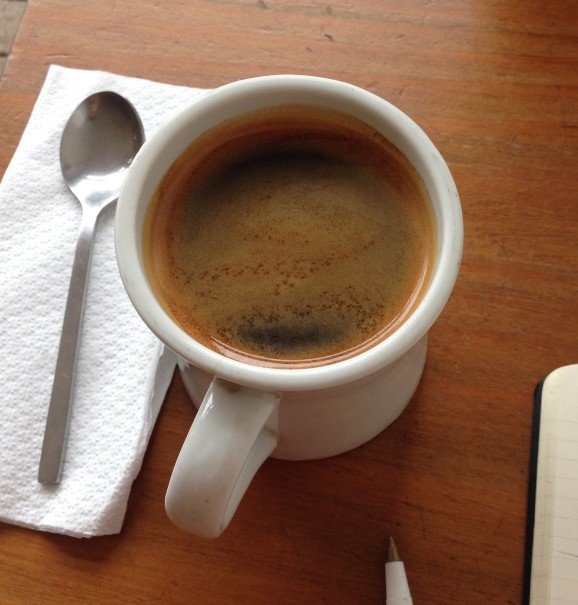
Why the Coffee Sucks in One of the World’s Best Coffee‑Growing Nations

Why the Coffee Sucks in One of the World’s Best Coffee‑Growing Nations
Coffee in Marsella
I’m sitting outside a cafe in Marsella, Colombia—a small town located in the middle of Colombia’s “eje cafetero,” or “coffee axis”—trying to figure out why Colombian coffee is so bad.
It shouldn’t be. If I were to get out of my chair and sprint in any direction for two minutes I’d soon find myself wading through rows and rows of leafy, verdant coffee plants, some of the most renowned arabica plants in the world. And yet order a coffee in 99 percent of establishments in Colombia, like the one I’m at right now, and the result is the same: a product that vaguely resembles what you know to be coffee but tastes more like battery acid.
Further north, in the town of Fredonia, an hour and a half south of Medellin, I get a little insight as to why this is. I talk to Richard, a twenty-something Fredonita whose family owns Cafe Don Chucho and has 30,000 plants in the neighboring hills. Richard is fighting a difficult fight; he’s trying to bring coffee culture to Fredonia, a tiny town built on a mountainside whose main modes of transportation include horseback and heavy-duty Toyota Land Cruisers.
“The old people, they’re not going to change,” explains Richard. “They’re happy with the way tinto tastes. It’s what they know. But the younger generation is starting to get more interested in the way coffee could be.”
The tinto Richard is talking about is essentially what Colombian coffee culture has always been. It’s made in a colossal silver cylinder drip machine, filtered several times and heated and reheated throughout the day. What’s more, often times it’s not even Colombian; it’s imported pre-ground from Vietnam. When I ask Richard if it wouldn’t be cheaper to use local coffee, he looks sheepish. “Actually, probably yes,” he says. “But again, this is the way they’ve always done things. It’s the system they’re used to.”
In the capital of Bogotá, just 143 miles away as the crow flies but nine hours by bus, this system is starting to change. The following week I check out cafe and bakery Arbol del Pan, a perfect example of the advancing coffee culture in Colombia. The americano I order tastes fresh-roasted, fresh-ground, and properly prepared.
Arbol del Pan gets their coffee from Vereda Central, a local roaster whose employee, Santiago, sheds valuable light on the Colombian coffee situation.
“In the 70s and 80s, the norm became exporting the best beans and using the pasilla“—beans damaged by bugs and other elements—”for local coffee. Then came Oma and Juan Valdez (Colombian coffee chains) who started using healthy beans, but still not the best. And now you have places like Arbol del Pan that only use premium-quality, single-origin beans.”
Why would a farmer sell them in his home country when he can get a much higher price abroad? And, of course, there’s also the matter of tradition. “People are used to their tinto and and they’re used to paying 800-1000 pesos”—about 30 cents USD—”for it,” Santiago says, echoing Richard’s statements. “Why would they pay more?”
In Bogotá, however, people are starting to pay more. People are willing to shell out a few extra pesos for a locally-sourced, high-quality product. This isn’t surprising, being in the capital, but I wonder what will become of Richard and his coffee shop back in Fredonia. Due to the longstanding tinto tradition, Richard is fighting an uphill battle. And in Fredonia, as well as in most of Colombia, the hills are steep.